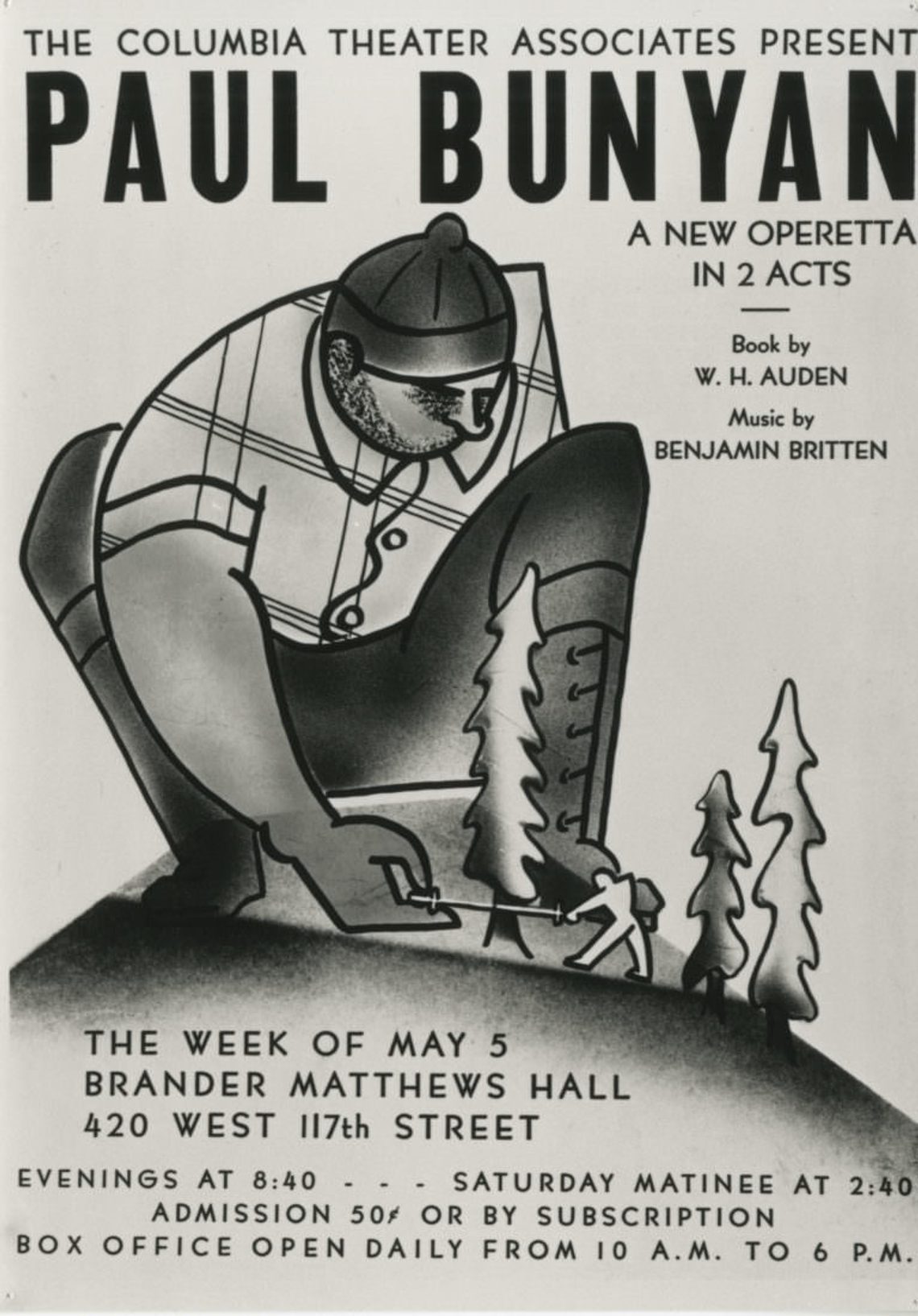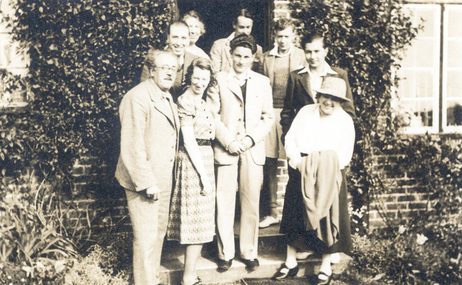Presented by Vicki P. Stroeher
To mark the opening of the new exhibition Britten in America at The Red House (from 1 March) we look at Britten’s largest-scale ‘American’ work: Paul Bunyan. As Prof Vicki Stroeher describes in this film, Britten’s first stage-work was not a great success with the American critics: it effectively ended a great run of hits he had been otherwise enjoying during his time in the USA; wounded by the experience Britten consigned it to a drawer for over 30 years.

Poster for the first performances of ‘Paul Bunyan’. Courtesy of the Britten-Pears Foundation.
It was a collaboration between Britten and WH Auden, who was also living in the States. Along with Peter Pears, the two men shared a rackety brownstone in Brooklyn for most of 1940, keeping company with the novelist Carson McCullers, the flamboyant literary editor of Harper’s Bazaar George Davis, and none other than Gypsy Rose Lee. The eclecticism of the household is reflected in the tremendous patchwork of musical styles and pastiches throughout Paul Bunyan. It is – as Britten wrote to his sister Beth – ‘full of tunes that people even whistle!’ The opera’s accessible tunefulness may not have pleased the critics at the time, but when Britten revised it after serious illness in the 1970s his audiences were surprised and delighted at this ‘hidden’ work. Nowadays it is increasingly popular with opera companies: ENO Studio Live will be putting on a production of it in September 2018.


